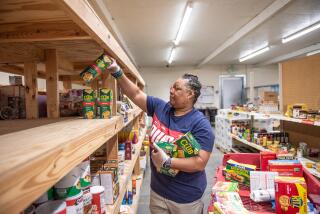Letters: What children eat at school
Re “Out-to-lunch regulators,” Editorial, April 8
It’s challenging to satisfy one child’s palate, let alone 30 million. Yet 90% of schools are meeting the U.S. Department of Agriculture’s updated nutrition standards.
School cafeterias are no different than our own homes: Americans simply waste too much food. In response, some schools have employed “share tables” where students leave food they will not consume for others.
Changing the way Americans eat will not happen overnight. Schools are in transition, and we are listening carefully and providing some flexibility. I am confident that by working together, we can make the healthy choice the easy choice and give young people the nutrition they need for a bright, successful future.
Kevin Concannon
Washington
The writer is undersecretary for food, nutrition and consumer services at the U.S. Department of Agriculture.
Some 40 years ago I ran the independent community schools in Boston, which were founded by black parents disgusted with the racist behavior of the Boston School Committee.
These quasi-public, tuition-free schools had a federal school lunch program. All of our schools were located in low-income, working-class neighborhoods.
Recognizing that many in these neighborhoods were not eating three square meals a day, I invited those who needed some food to join our students at breakfast and lunch. We wasted little if any food, and at the same time we provided an important community service to those in need.
Never did a federal regulator knock on my door to tell me to stop. However, many neighborhood residents knocked on my door to tell me how valuable this community feeding initiative was to them.
Philip S. Hart
Los Feliz
ALSO:
Letters: Out at Mozilla, but was it fair?
Letters: The two sides of Stephen Colbert
Letters: No help for women from Republicans
More to Read
A cure for the common opinion
Get thought-provoking perspectives with our weekly newsletter.
You may occasionally receive promotional content from the Los Angeles Times.










